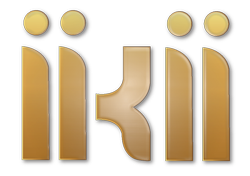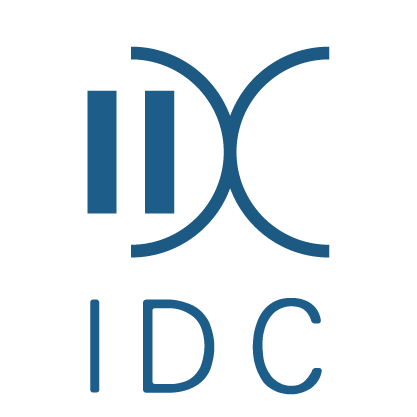Technical Paper
Influence of Aritificial Intelligence on Art From Perspective of Creativity and Originality
More Detail
1 Korea International School2 FAYSTON Preparatory* Corresponding Author
Innovation on Design and Culture, 3(3), September 2024, 22-27, https://doi.org/10.35745/idc2024v04.03.0003
Published: 30 October 2024
OPEN ACCESS 340 Views 1198 Downloads
ABSTRACT
The history of art mirrors societal, religious, political, and technological evolution. From prehistoric cave paintings, which conveyed human experiences and rituals, to ancient artworks in Egypt, Greece, and Rome, art has long reflected cultural values and power dynamics. Technological advances, such as the use of bronze and marble, enabled larger and more enduring works, while the Middle Ages were dominated by religious themes in Christian and Islamic art. The Renaissance shifted focus to realism and secularism, supported by innovations such as linear perspective and oil painting. Baroque and Rococo art, characterized by emotional and elaborate styles, reinforced the power of monarchies and the Catholic Church. In modern times, industrialization and political upheavals inspired artists to challenge traditional norms, with technologies like photography and digital media expanding artistic expression. Artificial Intelligence (AI) has recently become a key tool in art, capable of generating music, visual art, and literature. Programs like GPT and DALL-E push the boundaries of human-machine collaboration, raising questions about creativity, originality, and ethics. While AI enhances efficiency, concerns about job loss, bias, and intellectual property emerge, especially in the creative industries.
CITATION (APA)
Jang, E. S., & Kim, S. (2024). Influence of Aritificial Intelligence on Art From Perspective of Creativity and Originality. Innovation on Design and Culture, 3(3), 22-27. https://doi.org/10.35745/idc2024v04.03.0003
REFERENCES
- Blunt, Anthony. (2001). Roman Baroque. (Blunt, Anthony Ed.) Michigan, MI, USA: Pallas Athene Arts.
- Bostrom, Nick, and Yudkowsky, EEliezer. (2014). The Ethics of Artificial Intelligence. (Frankish, Keith, and Ramsey, William M Ed.) In Cambridge Handbook of Artificial Intelligence, Cambridge, UK: Cambridge Publishing; pp. 316-334.
- Brown, Tom B.; Mann, Benjamin; Ryder, Nick et. al., (2020). Language Models are Few-Shot Learners. NeurIPS Proceedings, 2005, 14165. https://doi.org/10.48550/arXiv.2005.14165.
- Bull, Malcolm and Galimberti, Jacopo. (2022). Oxford Art Journal, 45(2), 167–177. https://doi.org/10.1093/oxartj/kcac013.
- Camille, Michael. (1992). Image on the Edge : The Margins of Medieval Art. Massachusetts, MA, USA: Harvard University Press. 104–107.
- Castillo, Agustín Diez. (2000). Beyond Art: Pleistocene Image and Symbol. European Journal of Archaeology, 3(1), 139–140. http://dx.doi.org/10.1177/146195710000300116.
- Cess.com. (2018). Kasparov vs. Deep Blue: The Match That Changed History. Available online:https://www.chess.com/article/view/deep-blue-kasparov-chess (accessed on July 27, 2024).
- Crawford, Kate, and Paglen, Trevor. (2021). Excavating Ai: The Politics Of Images In Machine Learning Training Sets. AI & Society, 36, 1105–1116. https://doi.org/10.1007/s00146-021-01162-8.
- Elgammal, Ahmed., Liu, Bingchen, Elhoseiny, Mohamed, and Mazzone, Maria. (2017). CAN: Creative Adversarial Networks, Generating "Art" by Learning About Styles and Deviating from Style Norms. https://doi.org/10.48550/arXiv.1706.07068.
- EPFL, (2024). DeepArt, The Computer That Paints Your Portrait. Available online:https://actu.epfl.ch/news/deepart-the-computer-that-paints-your-portrait/ (accessed on July 27, 2024).
- Esteva, Andre; Robicquet, Alexandre; Ramsundar, Bharath; Kuleshov, Volodymyr ; DePristo, Mark; Chou, Katherine; Cui, Claire; Corrado, Greg; Thrun, Sebastian, and Dean, Jeff. (2019). A guide to deep learning in healthcare. Nature Medicine, 25(1), 24–29. https://doi.org/10.1038/s41591-018-0316-z.
- Floridi, Luciano, and Cowls, Josh. (2019). A Unified Framework of Five Principles for AI in Society. Harvard Data Science Review, 1(1). http://dx.doi.org/10.1162/99608f92.8cd550d1.
- Gatys, Leon. A., Ecker, Alexander. S., and Bethge, Mathias. (2015). A Neural Algorithm of Artistic Style. https://doi.org/10.48550/arXiv.1508.06576.
- Guo, Mengyao, Zhang, Xiaolin, Zhuang, Yuan, and Chen, Jing. (2023). Exploring the Intersection of Complex Aesthetics and Generative AI for Promoting Cultural Creativity in Rural China After the Post-pandemic Era. AI-generated Content. 1946, 313–331. http://dx.doi.org/10.1007/978-981-99-7587-7_27.
- Huang, Ming-Hui, and Rust, Roland T. (2024). Automating Creativity. https://doi.org/10.48550/arXiv.2405.06915.
- Landauer, Carl. (1994). Erwin Panofsky and the Renascence of the Renaissance. Renaissance Quarterly, 47(2), 255–281. https://doi.org/10.2307/2862914.
- McCarthy, John, Minsky, Marvin, Rochester, Nathanael., and Shannon, Claude. E. (1956). A Proposal for the Dartmouth Summer Research Project on Artificial Intelligence. AI Magazine, 27(4), 12–14. https://www.researchgate.net/deref/http%3A%2F%2Fdblp.uni-trier.de%2Frec%2Fbibtex%2Fjournals%2Faim%2FMcCarthyMRS06?_tp=eyJjb250ZXh0Ijp7ImZpcnN0UGFnZSI6InB1YmxpY2F0aW9uIiwicGFnZSI6InB1YmxpY2F0aW9uIn19.
- McCosker, Anthony, and Wilken, Rowan. (2020). Automating Vision: The Social Impact of the New Camera Consciousness. NewYork, NY, USA: Routledge. http://dx.doi.org/10.4324/9780429341175
- Piskopani, Anna Maria, Chamberlain, Alan, and Holter, Carolyn Ten. (2023). Responsible AI and the Arts: The Ethical and Legal Implications of AI in the Arts and Creative Industries. In Proceedings of TAS '23: First International Symposium on Trustworthy Autonomous Systems. 1–5. https://doi.org/10.1145/3597512.3597528 .
- Platt, Verit: The Matter of Classical Art History. Daedalus, 145(2), 69–78. https://www.jstor.org/stable/24711578.
- Roser, Max (2022). The Brief History of Artificial Intelligence: The World Has Changed Fast — What Might Be Next? Available online: https://ourworldindata.org/brief-history-of-ai. (accessed on July 27, 2024).
- The Centre international d’art contemporain de Montréal, (2024). AICAN: Created Artist. Available online: https://ciac.ca/en/ai-ciac-mtl-03-02/ (accessed on July 27, 2024).

 OPEN ACCESS
OPEN ACCESS

 The articles published in this journal are licensed under the CC-BY Creative Commons Attribution International License.
The articles published in this journal are licensed under the CC-BY Creative Commons Attribution International License.